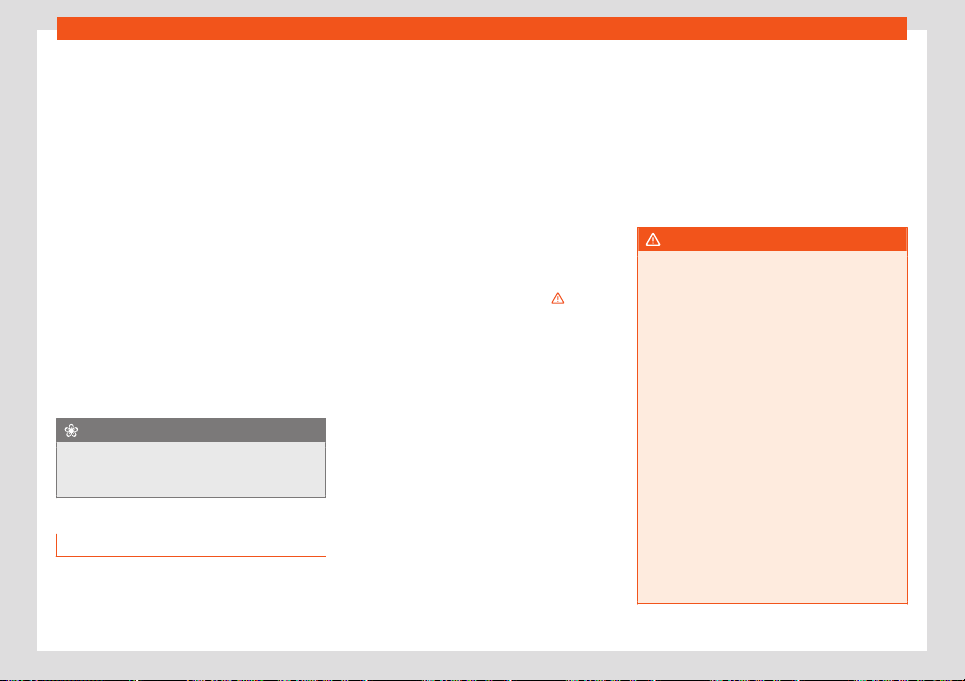Loading ...
Loading ...
Loading ...

Driving
engine wear and increase its useful life. Never
driv
e at e
xtr
emely l
o
w engine speeds. Always
engage a lower gear when the engine works
“irregularly”. For the first 1000 km or
600 miles, please note:
●
Do not use full throttle.
●
Do not force the engine above two thirds of
its maximum speed.
●
Do not tow a trailer.
Between 1000 and 1500 kilometres (600
to 1000 miles), gradually increase power
until reaching the maximum speed and high
engine speeds.
Running in new tyres and brake pads
●
Replacement of wheel rims and new tyres
›››
page 358.
●
Information about brakes
›››
page 296.
For the sake of the environment
If the engine is run in gently, the life of the
engine will be increased and the engine oil
consumption reduced.
Four-wheel drive (4Drive)
3 Valid for vehicles: 4Drive all-wheel drive
On four-wheel driv
e models, the engine pow-
er is distributed to all four wheels
General notes
On four-wheel drive vehicl
es, the engine
power is distributed to all four wheels. The
distribution of power is controlled automati-
cally according to your driving style and the
road conditions. Also see
›››
page 300.
The four-wheel drive is specially designed to
complement the superior engine power. This
combination gives the vehicle exceptional
handling and performance capabilities, both
on normal roads and in more difficult condi-
tions, such as snow and ice. Even so (or per-
haps especially for this reason), it is important
to observe certain safety points
›››
.
Wint
er t
yr
es
Thanks t
o f
our-wheel drive, your vehicle will
have plenty of traction in winter conditions,
even with the standard tyres. Nevertheless,
we still recommend that winter tyres or all-
season tyres be fitted on all four wheels to
give even better braking response.
Snow chains
On roads where snow chains are mandatory,
this also applies to cars with four-wheel drive
›››
page 362.
Changing tyres
On vehicles with four-wheel drive, all four
tyres must have the same rolling circumfer-
ence. Also avoid using tyres with varying
tread depths
›››
page 358.
Off-roader?
If your SEAT vehicle is not an off-roader: it
does not have enough ground clearance to
be used as such. It is therefore best to avoid
rough tracks and uneven terrain as much as
possible.
WARNING
●
Even with four-wheel drive
, you should al-
ways adjust your speed to suit the condi-
tions. Do not let the extra safety features
tempt you into taking any risks when driv-
ing. Risk of accident!
●
The braking capability of your vehicle is
limited by the tyres' grip. It is therefore no
different from a car without four-wheel
drive. So do not be tempted to drive too fast
on firm or slippery roads just because the
vehicle still has good acceleration in these
conditions. Risk of accident!
●
On wet roads bear in mind that the front
wheels may start to “aquaplane” and lose
contact with the road if the car is driven too
fast. If this should happen, there will be no
sudden increase in engine speed to warn
the driver, as occurs with a front-wheel
drive car. For this reason you should always
choose a driving speed suitable for the
road conditions. Risk of accident!
264
Loading ...
Loading ...
Loading ...